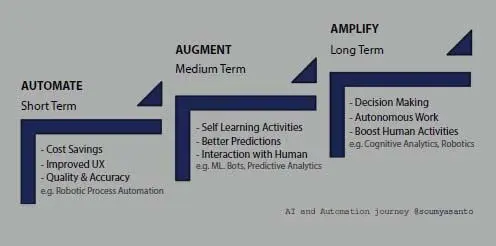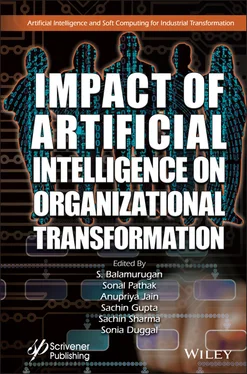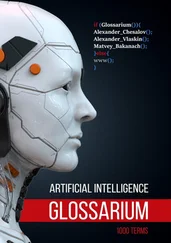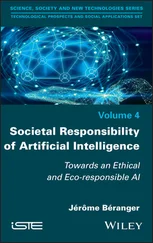3.5 Branches of AI in HR
3.5.1 Machine Learning
It is the branch of AI that helps or makes the machines able to study the data and makes future forecast based on the collected data. The source of machine learning lies in the pattern and appraising the data based on the algorithm. According to Davenport and Ravenki [5], machine learning possesses the ability of identifying probable matches based on the most similar data and can also be associated with the same person and the beauty lies in the fact that the data may appear in slightly different formats across databases. Machine learning helps in following areas in HR context.
3.5.1.1 Variance Detection
Variance detection identifies the items, events, or observation which shows some deviation from the expected pattern or the routine task in the database. The said algorithm can be used tom study the constant behavior of the employee behavior and the deviation from the same can be used to study the reason behind so.
3.5.1.2 Background Verification
Models based on the machine learning can get the meaning and blow the warning signals for the structured and unstructured data from the resume of the applicant.
3.5.1.3 Employees Abrasion/Attrition
It helps the employer to recognize the employee who is at the border of abrasion and makes the HR manager to involve actively with this employee and try all the remedies to hold them.
3.5.1.4 Personalized Content
It provides a more tailored made employee engagement by using the predictive analytics to endorse career goals based on professional growth programs or to enhance the career based on data of the prior action of the applicants collected from different sites.
Deep learning is a division or branch of machine learning that prepares a technical device like computer or laptop to learn and comprehended from great amounts of data through neural network construction. As it is the more developed stream of the machine learning, it divides the data into layers of impression. Deep learning makes the computers able to set up primary basics about the data and trains them to learn and execute by its own by recognizing the patterns using multiple neural network layers for working.
Deep learning algorithms can start working after sufficient training; Deep learning can instigate to make forecasts or elucidations of very complex data.
3.5.2.1 Important Use of Deep Learning in HR Context
3.5.2.1.1 Recognition of Video and Image
Deep learning assists in classification of objects and identification and classification of the candidates based on the objective data. So, it helps to read the image and identify the video and get the deep learning based on the expression tones and features. Figure 3.4shows different branches of AI and its uses in various function of HR. Researchers’ own conception.

Figure 3.4 Branches of AI in HR and its uses. Source: Mckinsey Global Institute for HR.
3.5.2.1.2 Speech Recognition
By understanding the human voice, pitch, accent, and voice input, the machine can respond accordingly and select the candidates as per the requirement.
3.5.3 Natural Language Processing
The work of understanding human nature, language, tone, and context is done with the help of natural language processing (NLP) trains chatbots. NLP enables the AI system as the capable capacity builder for the organizations to continue to automate HR service delivery with chatbots.
3.5.4 Recommendation Engines
Digital learning capabilities mostly encompass tailored learning recommendations correlated to level of skills and the professional interests. By the use of Big Data and the Deep learning, learning experience stages can recognize learning pathways that might interest individual employees.
3.6 Implication Stages of AI in HR
In the consumer survey done by PWC of its consumer Intelligence series, they propose the following implication stages of AI in HR.
The image above shows the vital variables that are needed to build an AI tactic for HR and workforce. The creator of the model shows to how the begin the implication AI in automation, work force, key job roles, and work processes.
At this stage of automation, the key activities are decided that can be automated to give the better efficacy and effectiveness to get the usual task done. The process is center around computerizing the updates of routine assignment. Insightful automation links AI with automation to empower machines to detect, comprehend, learn, and act—either autonomously or with human help. Intelligent automation can perform manual assignments and can also decide as human would. AI capacities can empower machines to understand process and its variations. Intelligent mechanization can be used do monotonous manual procedures to help proficiency and profitability and drive advancement.
The process of augment decides the way the value that can be developed by using human analytics to recognize the upcoming opportunities for better strategic adaptation.
It decides the work procedures and flow of the work that could be modified by AI skills to enhance the growth. Figure 3.5is showing the various of implication of AI in HR at short term, medium term and long term. Source: Image courtesy of PWC Consumer Intelligence Series.

Figure 3.5 Implication stages of AI in HR. Source: https://www.cmswire.com/digital-workplace/7-ways-artificial-intelligence-is-reinventing-human-resources.
3.7 Process Model of AI in HR
The process of the use of AI in HR flows from left the right. The NLP software comes with the Natural Language Generation (NLG) software has the skills to change the data from the automated collected data and draws an insight from it. It reduces the bottle neck of human bias, faulty selection, and mismatch of the employee profile and reaches to the decision based on the algorithms.
The exhibit shows that HR teams collect the data from the various resources. Sometimes, it collects the data from the social sites, companies’ record, candidates’ activities from the social sites, etc.
The AI helps to extract the insight from the data and analysis the data through pre-defined algorithm as stated above by combining and systematically analyzing statement of the people, attitude, and intents on social media.
Analysis of the data is done with the auto med work which is done with the help of NLP, deep learning, and machine learning.
For example, the movement of the muscles can be great describer of the employee’s behavior or attitude toward work, for example, interviewee frown while describing his previous boss or job experience, AI can judge the attitude and can relate. By recording the voice tone, the machine can Judge or interpret whether the respondents are enthusiastic or depressed while describing the past and her career goals. Likewise, the smart people analytics helps innovative approach to collect, manage, analyze, and protect the data in regard to human resource. The help of AI would help to gain the deeper insight in the sub conscious mind of the applicant, which would result in tracking the people with high IQ and EQ and would overrule the interview bias. Figure 3.6is showing the entire process as model of AI in HR and how it helps in decision making.
Читать дальше














